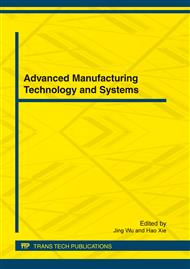p.41
p.46
p.51
p.56
p.69
p.74
p.79
p.84
p.88
Antistatic TPU/PA6 Blends Prepared by Blending Modification
Abstract:
This research is aimed to achieve TPU-based TPU/PA6 blends which is equipped with both considerable mechanical properties and antistatic performance by blending with different portions of compatibilizer EVA-g-MAH and conductive carbon black with twin screw extruder. Results indicate that, the EVA-g-MAH not only improves the blend’s compatibility but also the mechanical properties. DSC results show that the gap between the glass transition temperatures of TPU and PA6 got shorten after adding EVA-g-MAH. The 70TPU/30PA6/15 EVA-g-MAH has better mechanical properties which are congruent with the findings of the SEM, and when this ratio was blended with different portions of conductive carbon black, their mechanical properties almost retain the same, but the blends obtain the antistatic property eventually. While lowering the production costs, the industrial application scope of TPU is widened especially the fields which have high requirement for antistatic property, such as electronic, medical, automotive, packaging, etc.
Info:
Periodical:
Pages:
69-73
Citation:
Online since:
March 2012
Authors:
Keywords:
Price:
Сopyright:
© 2012 Trans Tech Publications Ltd. All Rights Reserved
Share:
Citation:


